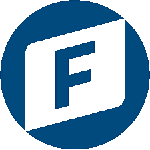I use a variety of approaches, like parallel design (Nielsen 1993), Findeli’s project-grounded model (Findeli 2010), or collaborative design (Scrivener et al. 2000).
Based on previous research and subsequent concepting, I start the design process using creative techniques, like moodboards, competitor reviews, or classic brainstorming.
Next, I create sketches and pen and paper prototypes. This is a fast and frugal way to produce various, distinct design solutions.
Gradually, the designs are developed into high-fidelity prototypes. These prototypes are functional and interactive, thus, they are very similar to the final product.
In the end, the designs are finalized, developed, and released.
Of course, in the design process many iterations are included, and it might be required to got back to previous steps if the designs are not optimal. In addition, continuous user testing is necessary. Consequently, the design process might take few days up to several months.
If interested in a more detailed description of the planning and the design production process, please, find a preprint chapter from my textbook Universal, Intuitive, and Permanent Pictograms here (PDF / 2.1 MB).





